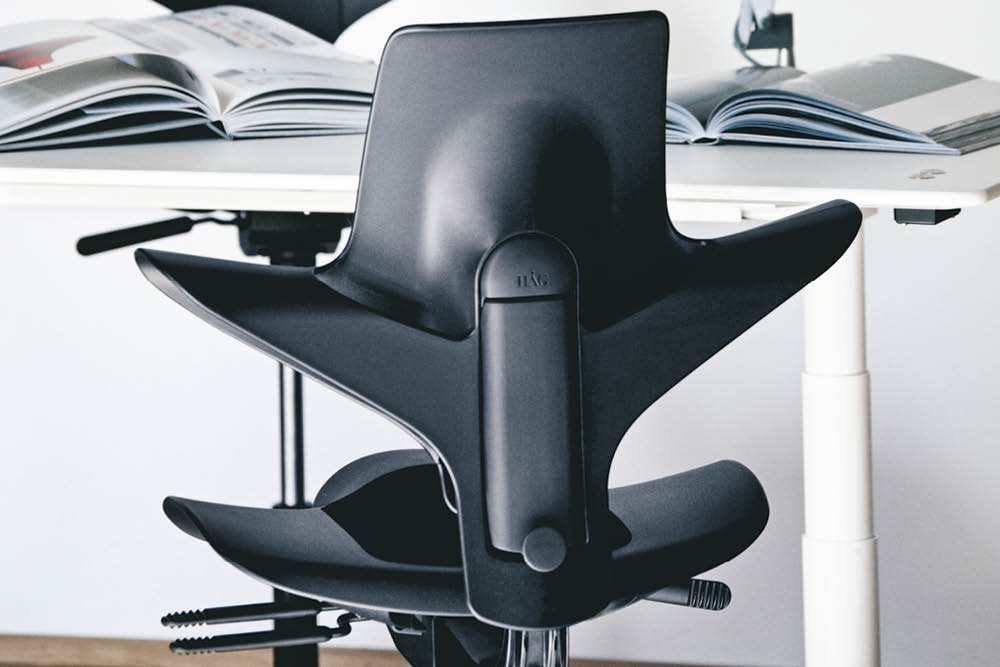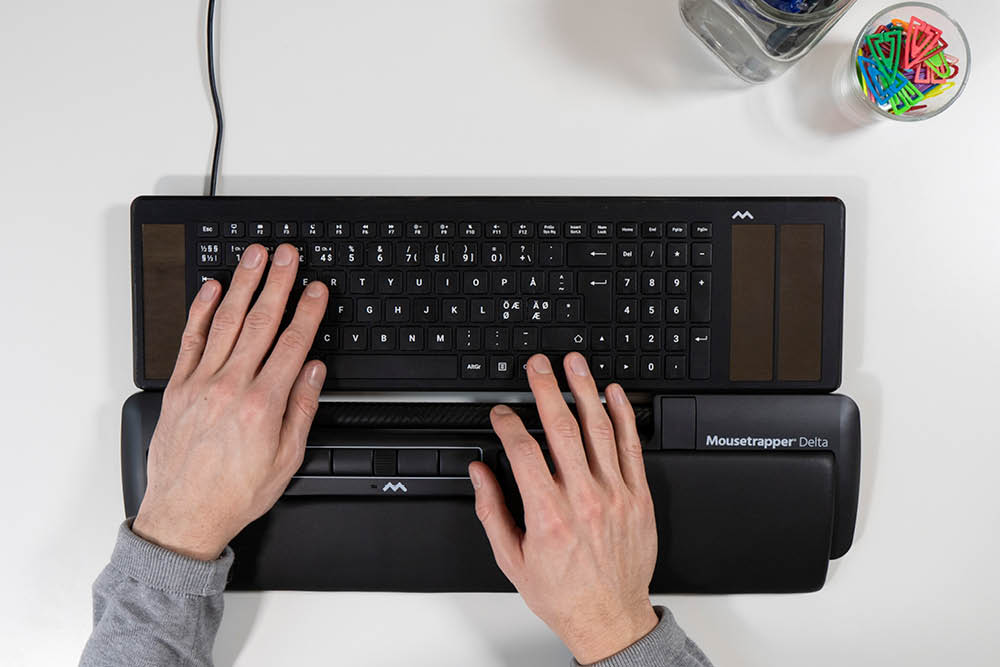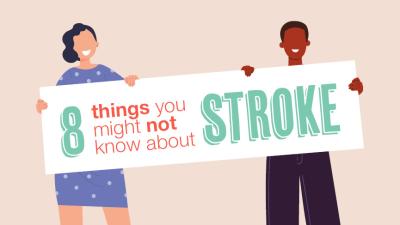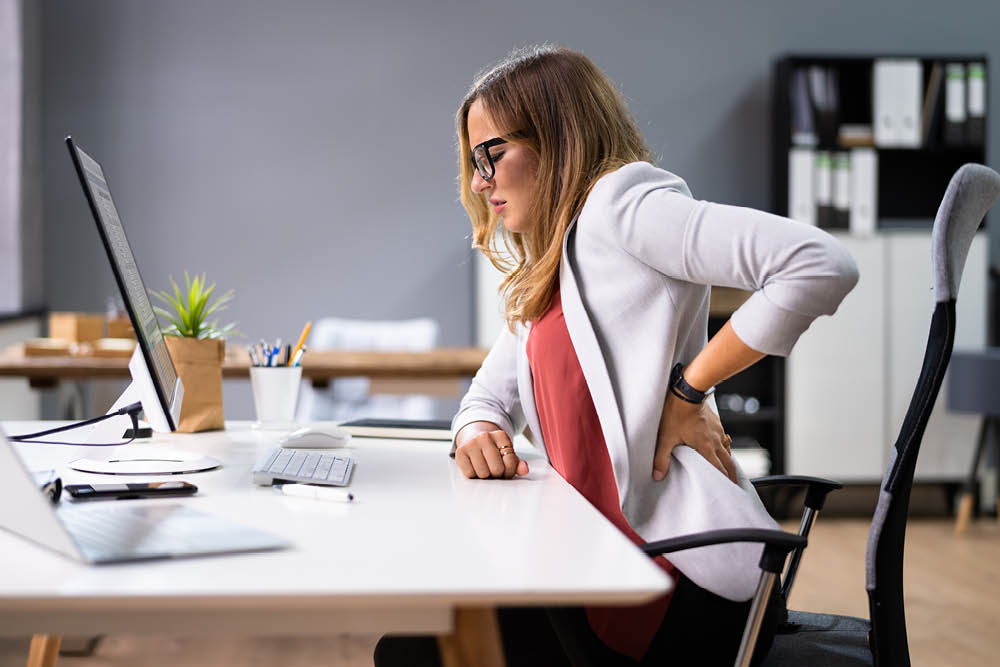
Pain is not to be sniffed at. You and your team can’t work properly if distracted by pain or discomfort.
Presenteeism and absenteeism come into play when we discuss health and safety at work: and you know full well they’re bad for your business - but to what extent?
The DSE assessors at Posturite are in the business of talking about pain and discomfort every day; whether it’s pain in the back, neck, shoulder, wrist or in any other part of the body. Despite this, they’re a very cheerful bunch!
DSE stands for ‘Display Screen Equipment’ and three of these helpful individuals who advise clients on working more comfortably and productively at computer workstations have contributed to this blog – because they want to let you know about all the small differences that can make a big difference to pain in the workplace.
The impact of presenteeism
Vitality’s survey for Britain’s Healthiest Workplace showed that presenteeism’s impact on productivity is actually 12 times greater than absenteeism.
Head Consultant in Ergonomics and Health and Safety at Posturite, Katharine Metters, says “Presenteeism is when you’re working but your output is poor. You are available at your desk, you get paid, but you're not actually doing as well as you could do because you're ill or distracted. Pain is a frequent cause of this.”
Good employers get their staff the help they need
In 2021-22 in the UK, musculoskeletal problems were the second most common reason for absence from work.
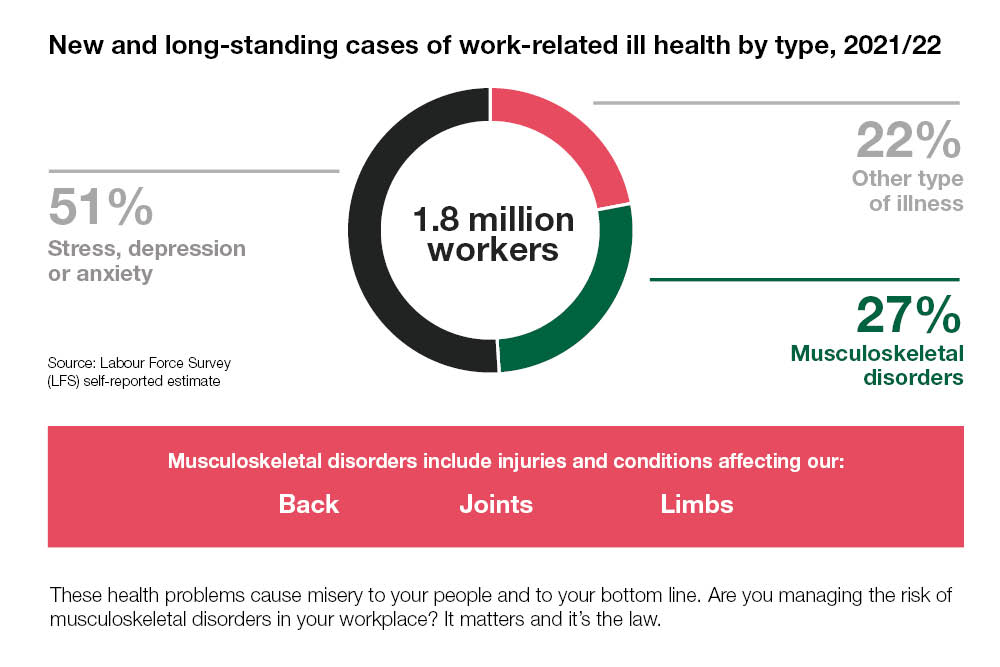
When your team members experience musculoskeletal pain, they’ll be wise to consult a medical professional such as a GP.
Employers can also offer problem-solving DSE assessments to get their staff expert, clear ergonomic guidance on what might help with the while working.
“I saw a gentleman yesterday with quite a significant back condition and he was so appreciative of his new employer’s stance about getting him assessed” says Katharine. “He said that he felt so supported. He was typical of many hybrid workers and had only been in the job a couple of couple of weeks, but the fact that somebody in his new organisation had already bothered to get somebody to come to his home and give him a DSE assessment engendered so much positivity.”
What kind of pain is bothering you at work?
“The majority of our clients having DSE assessments mention some form of pain or discomfort, whether it's mild or severe” DSE assessor Andrew Bevan tells me. He asks them:
- Where is the area of pain?
- How long have you been experiencing that particular issue for?
- How can you best describe the pain? Is it an achy pain or a sort of stiffness, or sharp shooting pains?
- In what circumstances and positions do you get the pain? And how frequently?
- Are there aggravating factors or relieving factors?
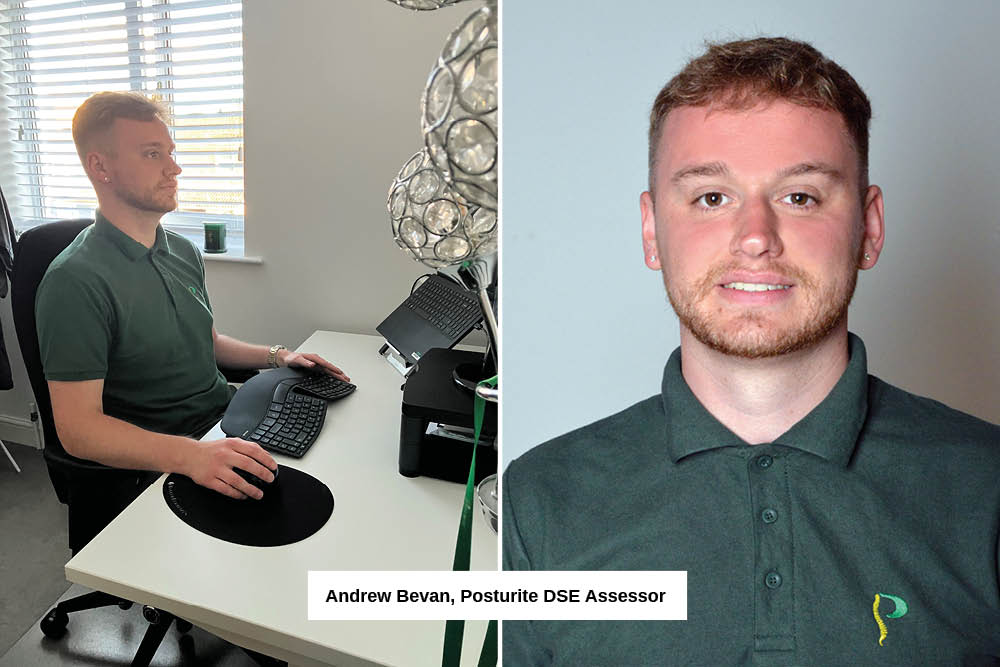
It’s important for Andrew and his team to listen carefully to the situation, as they genuinely want to help and they need to understand all the factors to do so. He draws on his knowledge of the body and postural stressors to help him understand why certain movements or positions might be causing pain or discomfort to somebody.
“People I speak to are often finding it difficult to focus and to concentrate at work because they’ve got this pain that's overshadowing everything. To be in that situation is dreadful, it’s debilitating.”
Do nip a problem in the bud early by the way. Andrew tells me that the longer you have these issues, the harder they often are to try and resolve.
Experienced DSE assessor Sarah Hubbard agrees: “We're not talking about serious injuries, but for instance something such as tennis elbow or a wrist issue that may have been triggered by repetitive mouse work (sometimes referred to as repetitive strain injuries - RSI), if you get treatment and alleviate the aggravating factors soon, it should hopefully go away quicker.”
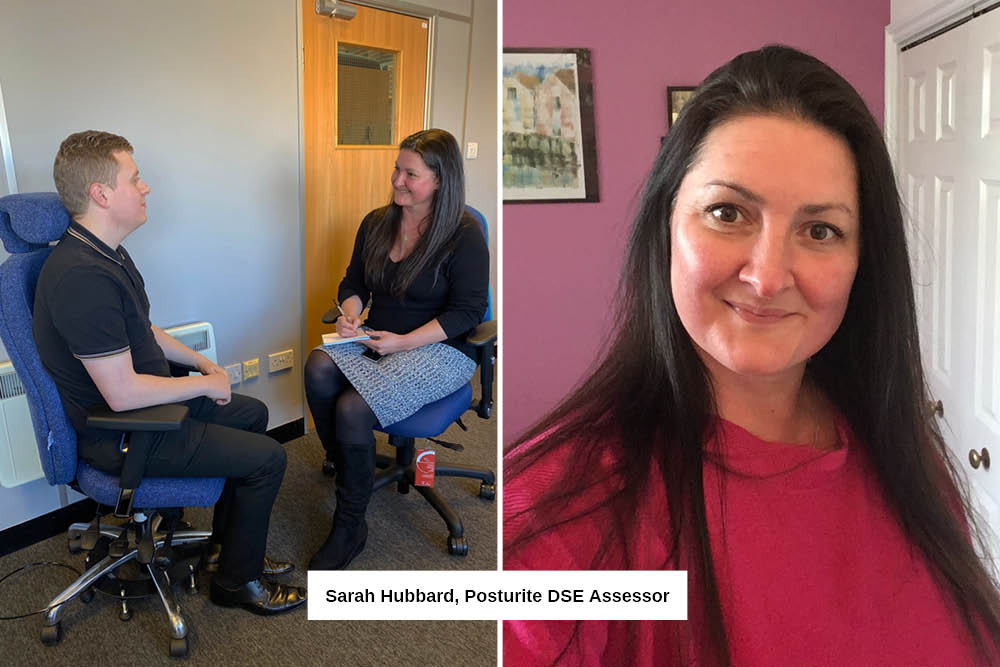
Is the solution all about getting new equipment?
No!
1) Workstation positioning is key.
Sarah from Posturite points out that a very large percentage of the population sit too low when working, which can lead to poor posture. That’s one thing she looks out for. If you have a lower back issue, if you're sitting too low, you tend to round into sort of a hunched position. Also if you're sitting too low, you end up lifting your arms and angling your wrists - which is likely to create upper back and shoulder tension and wrist problems. She advises people to sit with their hips just above their knees, so there’s a slightly downward slope on your thighs which encourages the pelvis into a more upright position, which naturally gets you sitting more upright and your shoulders can remain relaxed whilst working. Whereas if your hips go below your knees naturally, you'll roll back on your pelvis, which could lead to the slouching posture."
Here’s an Art of Sitting guide to help with all the aspects of workstation positioning you need to know.
I asked Sarah how she can tell if someone's sitting too low if they’re having a Remote DSE Assessment via video?
“We ask for a photograph of our client at their desk, and we ask for key measurements such as desk height, thigh length, and seat to shoulder height before the appointment too. And then we discuss the positioning during the call. Together we check their arm positioning in relation to a desk - we want to have our elbow just above the desk so that there's no elevation in the arm or the shoulder when you're working.
We offer both face-to-face and remote assessments by the way, in home or workplace environments all over the UK and Ireland; the service is very flexible.”
DSE assessors help people get their existing office chair adjusted correctly to suit their individual needs and this is incredibly effective. “We try and adjust the chair they have, just to get the correct support and to make them more comfortable for the time being - and often they won't have taken the time to work out the adjustments of the chair” Sarah tells me. “Perhaps they’re not aware that the seat length moves or the chair's got a recline function or a rocking movement. All of which, in the short term can help with aches and pains.”
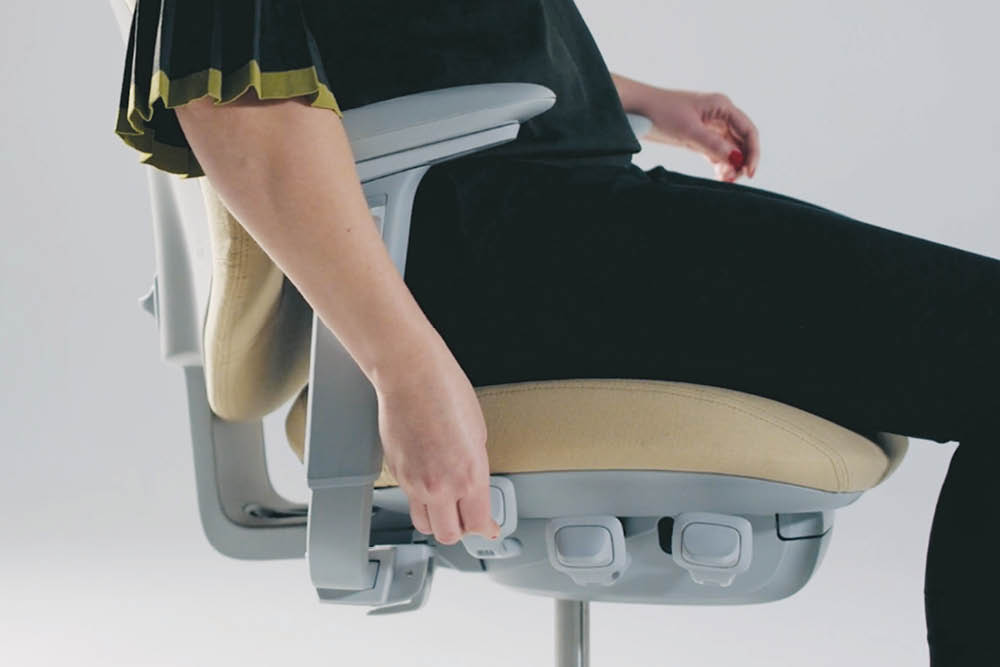
Visual fatigue issues are discussed in DSE assessments too – and sometimes assessors remind clients that leaning forward towards a screen might be causing tension in the neck, so eye tests are encouraged to resolve this.
2) Improving working habits plays a really important role in helping to alleviate pain.
Increasing movement, changing posture, having a stretch and taking short breaks is vital – humans aren’t designed to be sedentary. Move away from your desk as much as you can – simple but effective!
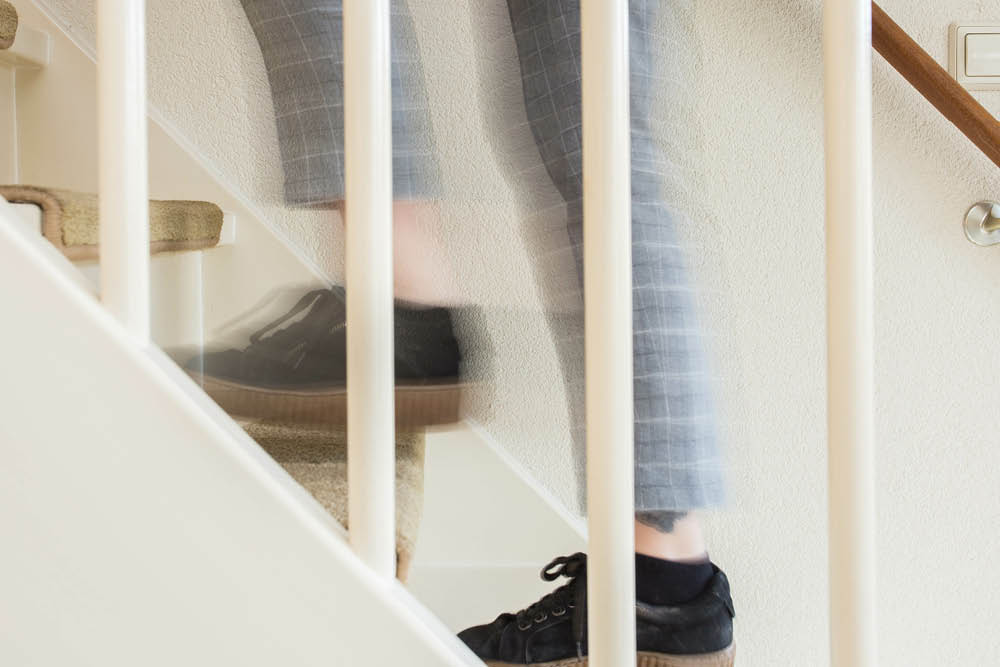
Think about standing for parts of your working day too.
“Most of my clients are fully aware that they should be moving more than they do, and they tell me ‘I'm stuck on calls’ and ‘I'm in meetings’ says DSE assessor Sarah. She persists in encouraging people to make the change however! She had a period of lower back pain herself last year and when it was uncomfortable to sit for long, she switched to a sit-stand desk; “Being able to stand at work alleviated a lot of my aches and pains at the time”.
Do you need privacy to talk about workplace pain?
If you have an open plan office, some of your employees might prefer to have a private chat with a DSE assessor in a separate room – so they feel they can be open and unguarded about any health issues. Assessors can look at home workstations too of course, and visit clients at home or deliver a remote assessment where the client can talk freely at home. The assessment report that the company will receive is an objective report of what the assessor has observed, any changes made to try to improve the working position and comfort of the person and any further, usually equipment recommendations, identified with clear justifications.
Does using a good ergonomic chair actually have an effect on pain?
Yes. Just look at these two examples of reviews that Posturite received this year:
Erin: “I have never been so comfortable while working. My pain is now gone. Great supportive chair, is completely adjustable.”
Christian: “Thank you to the designers for the pain relief generated by the chair as it is effectively designed for versatility (even sitting backwards) allowing me to sit for much longer without pain or discomfort and makes such a difference.”
You’ll need to make sure your ergonomic chair is adjusted and set up for your body shape and size to enjoy its benefits, and that you have good overall positioning at your workstation. Opt for a chair installation and setup service if you’d like extra help with this.
Smaller items can have an impact on pain too. Andrew sees many clients who are experiencing headaches. Whilst these need investigating by a doctor, simple changes such as screen filters, anti-glare screen hoods and/or anti-glare keyboards can be effective to help alleviate headaches and eye strain if glare and lighting issues are the cause of the headaches.
Andrew is also a big fan of vertical mice – have you seen the iconic Penguin Mouse gracing the desks of colleagues in the know? “A vertical mouse helps your arm into a more natural position. So anybody experiencing shoulder pain, elbow pain, forearm or wrist pain may benefit from one because it can align the arm into a more natural, comfortable position.”
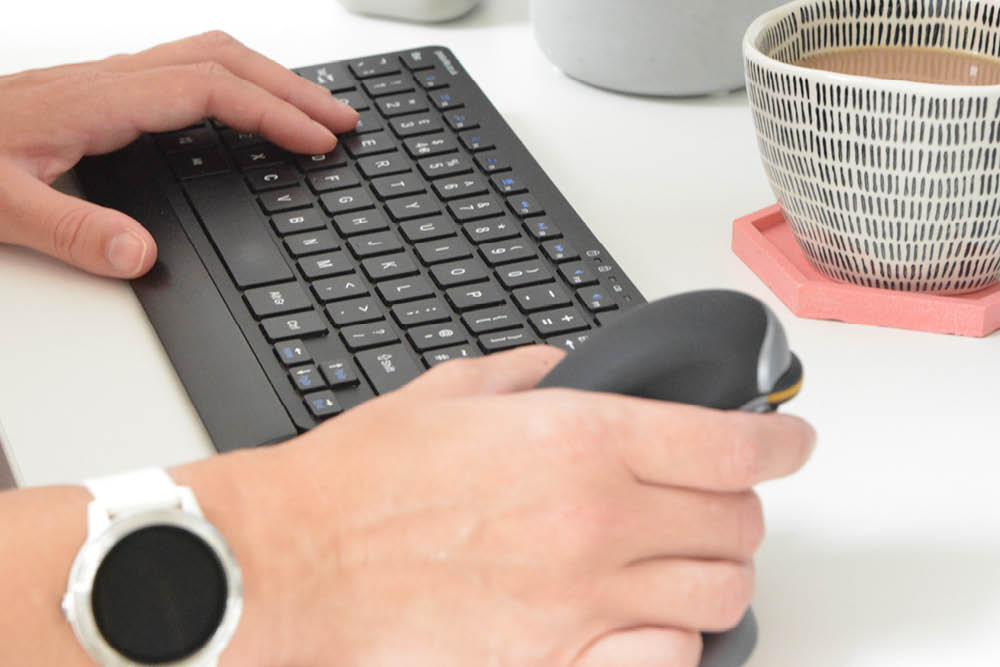
Are people less likely to suffer in silence with work-related health problems now?
Sarah tells me: “I think you'll always get those people who will sit in silence and don't mention pain in the workplace. But I think it's becoming less of an issue and people are definitely more aware now that things can be done. The opportunity to receive a DSE assessment is now much better known than when I started twenty years ago. And the change definitely came pre-Covid. Then Covid made people even more aware of their working environments and equipment – if they were sitting on a dining room chair to work, then they were uncomfortable.”
Is there more demand for DSE assessments to resolve pain in the winter?
Yes, Posturite becomes extra busy with DSE assessments from October onwards. “I’m not sure whether it's psychological or not, but the dark mornings, dark evenings and fewer holidays make my assessment diary even fuller in winter! And somebody who's suffering with an arthritic condition might dread the cold, damp weather.”
If driving is a large part of an employee’s job, what could you do to help resolve any pain experienced?
It’s common for drivers who rack up the miles for work to experience musculoskeletal pain and discomfort from time to time. You can offer them a Vehicle Assessment when an assessor will observe individuals in their stationary car, identify problem areas and recommend ways to increase comfort.
There are good products on the market which give back support in the car – take a look at the excellent ErgoDriver® driver’s back support for example, plus Posturite’s lumbar cushions and wedges for comfort, better positioning and support for people in the car.
No action for employee health and wellbeing?
The CIPD’s 2022 Health and wellbeing at work survey, in partnership with Simplyhealth, was an extensive piece of research recording the responses of senior HR leaders in the UK in 804 UK organisations covering more than 4 million employees. Worryingly:
- 19% of organisations say they are not currently doing anything to improve employee health and wellbeing.
- 49% do not take a strategic approach to employee wellbeing.
The CIPD report concludes that “We can’t afford to sideline the importance of people’s physical health, especially with the additional risks posed by the more sedentary practice of homeworking.”
What about preventing pain in the first place?

The world of ergonomics is jam-packed with ideas and solutions for preventing work-related pain and problems. For example, Sarah swears by her centralised mouse: “I’ve used my roll bar mouse for 19 years and I haven't got any wrist issues whatsoever – I use it for prevention.”
“A mini keyboard could also prevent upper limb issues. If you've got a mini keyboard, it means your mouse can be positioned closer to you, so you end up not reaching as far for the mouse. I like how lightweight mini keyboards are too – so hybrid workers are more likely to transport one to the office and out and about – and benefit from using it instead of a laptop keyboard requiring the screen to be positioned low.
We do have some people coming to us for DSE advice and saying that they don't really have any aches and pains - but they don't want any. We focus on prevention. And we have done assessments where people have had issues in the past, such as somebody who's had surgery, and they start a new job and they want good ergonomic equipment because they can’t bear the thought of old issues coming back.”
Andrew hopes the conversation about resolving pain in the workplace becomes even higher profile and here he sums up what being a DSE assessor is all about: “I feel awful for the people experiencing pain and you know, the right kit and the right advice can make such a world of difference. Knowing that I’m part of the process of making someone more comfortable is incredibly fulfilling. I love the thought that I’m making a difference to people’s lives.”
Read next:
• The benefits of using ‘standing desks’: what’s the latest research?
• Are employers doing enough to help homeworkers avoid back and neck pain?
• Use a computer? Remember your eye health





